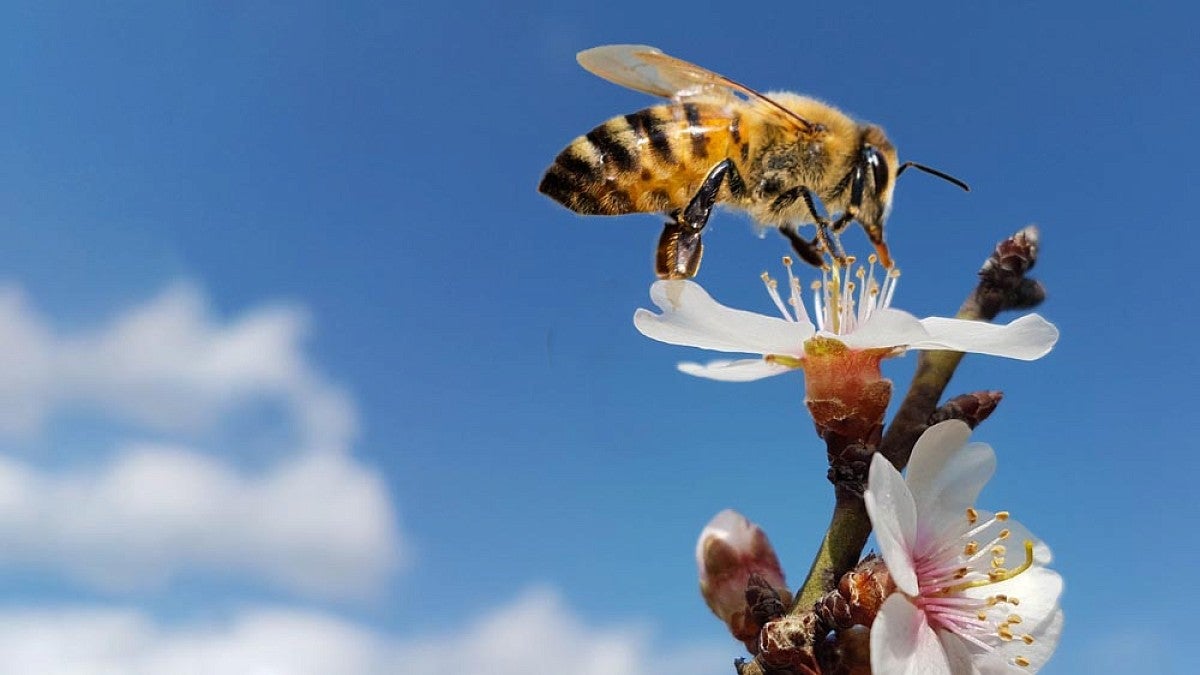Almonds are big business in California, which grows 80 percent of the world’s crop with a value of $5.62 billion.
To get those almonds to grow, farmers need bees to pollinate their crop. And bee populations have been suffering sharp declines in recent years, part of a pattern of widespread loss of pollinator diversity and abundance.
Now a UO biologist and former UO postdoctoral fellow have looked for ways to incentivize almond growers to adopt bee-friendly practices, such as planting cover crops, adopting permanent pollinator habitat and adopting best management practices for bees.
They found no silver bullet, but they learned that the location of almond groves played a central role in the adoption of bee-friendly practices, as well as concern for future pollination services. Their findings suggest a regionally flexible conservation strategy focused on supporting honeybee colonies might have the highest likelihood of grower participation and adoption.
The paper by Jennie Durant and Lauren Ponisio was published in the journal Frontiers in Sustainable Food Systems this summer. Ponisio is an assistant biology professor in the Institute of Ecology and Evolution in the UO Department of Biology. Durant was a postdoctoral fellow at the UO with the National Institute of Food and Agriculture when they conducted the study. She now is a science and technology policy fellow with the American Association for the Advancement of Science, working for the U.S. Department of Agriculture.
The scientists brought an interdisciplinary approach to the study: Ponisio is an ecologist skilled at large data analysis, while Durant describes herself as an agricultural sociologist.
Ponisio’s main area of study is bee conservation and community ecology. She grew up in Fresno “in the middle of all these almonds,” she said, and learned at an early age how important bees were to agriculture, notably when a frost killed flowers and bees.
“We’ve been working on trying to understand how we can restore populations of wild bees in agriculture,” she said. “There’s a lot of science on how to do that and its effectiveness, but not much uptake by growers.”
Ponisio and Durant conducted an online survey of 329 California almond growers, both hired farm managers and owner-operators.
The survey looked at the adoption of three types of bee-friendly practices: the adoption of cover crops, the adoption of permanent pollinator habitat, and the adoption of the California Almond Board’s Honey Bee Best Management Practices, which generally focus on pesticide reduction.
The results indicated that growers are more interested in growing cover crops than installing permanent pollinator habitat in their orchards. Cover crops may be more popular because they are perceived to require less water, attention, installation, and labor and maintenance costs than permanent pollinator habitat.
They found growers’ main incentive for adopting bee-friendly practices was to strengthen their honeybee colonies, followed by decreasing their rental fees for managed honeybee colonies. They were less concerned with native bee populations.
“We definitely saw growers are most interested in adopting bee-friendly practices to strengthen honeybee pollination during bloom, to increase their yield,” Durant said.
Where the growers are located — whether the drier southern regions of California, or the rainier north — is the biggest indicator of whether and how they adopt these practices, she said. For instance, growers in the Sacramento Valley, where there is higher rainfall, were more likely to plant cover crops and permanent pollinator habitat than their counterparts to the south.
“To me it suggests a regionally sensitive conservation approach might make the most sense,” rather than a strict statewide program, Durant said.
—By Tim Christie, University Communications


